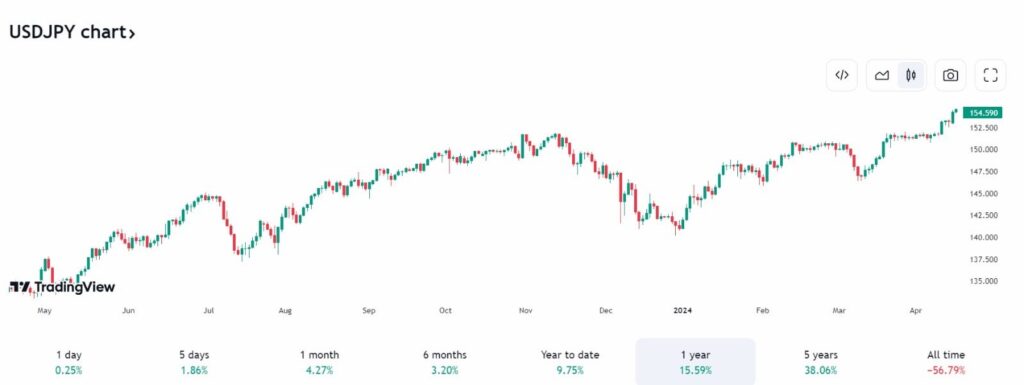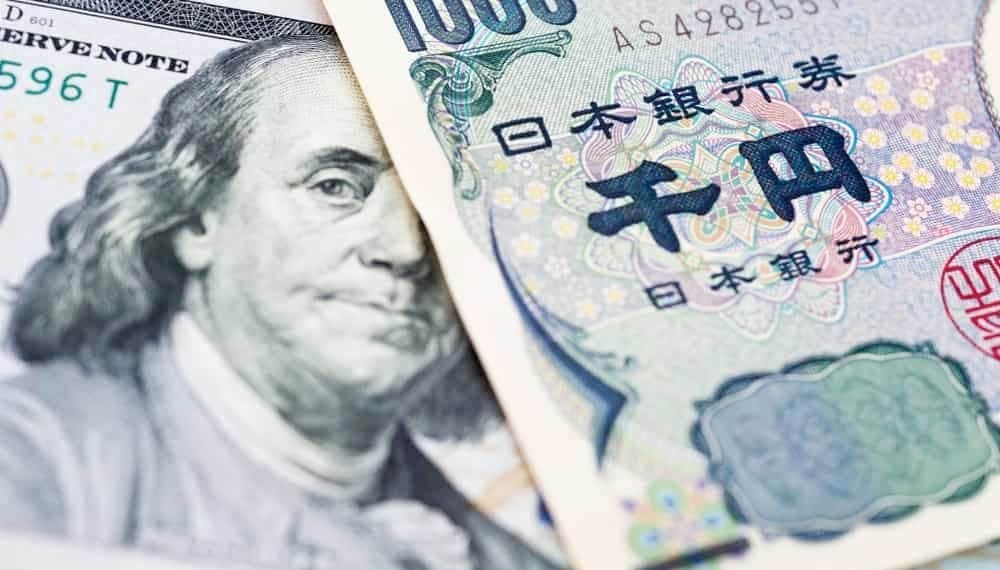The Japanese yen has dropped to its lowest level in 34 years, now trading at $0.0065 to the U.S. dollar as of April 16, by press time. This is the weakest the yen has been since 1990, showing a big drop amid rising U.S. interest rates and global tensions.
The recent end to Japan’s negative interest rate policy and an incremental interest rate hike—the first in 17 years—have not stemmed the yen’s decline. Despite these measures and ongoing market speculations, the USD/JPY pair has escalated to levels not observed since 1990, prompting serious intervention warnings from Japanese officials. On that note, one dollar now trades at 154.586 JPY.
Japan’s Monetary Policy Shift
Japan has ended its negative interest rate policy, marking a historic shift away from an aggressive monetary easing program that was implemented years ago to combat chronic deflation.
The Bank of Japan (BOJ) ended its long-standing negative interest rate policy, raising its short-term rate slightly from minus 0.1% to around zero to 0.1%. This cautious yet historic pivot aims to address long-term economic issues but has yet to curb the yen’s depreciation.
Additionally, the BOJ has discontinued its Yield Curve Control policy, which has been criticized for distorting finance market dynamics by suppressing the natural rise of long-term interest rates.
Technical Analysis of USD/JPY

Over the past year, the Japanese Yen (JPY) has steadily weakened against the US Dollar (USD), largely due to the widening interest rate differential between the two countries. The Federal Reserve’s hawkish stance is bolstering the USD, while the Bank of Japan maintains a more dovish approach.
From a technical perspective, the scenario presents mixed signals: short-term moving averages indicate a sell signal, whereas longer-term averages suggest a potential buy. The Relative Strength Index (RSI) is approaching overbought territory, hinting at a possible short-term correction that could see the yen strengthening slightly.
Market sentiment remains in favor of the USD, but the sustainability of the yen’s weakness is questionable. Resistance is currently near 154.8, with support levels around 150.8-150.9.
These thresholds are subject to change based on ongoing market dynamics.
Disclaimer: The content on this site should not be considered investment advice. Investing is speculative. When investing, your capital is at risk.










